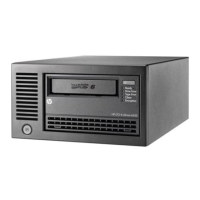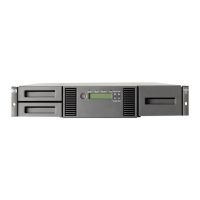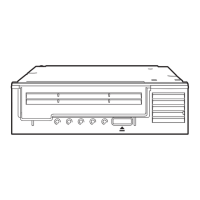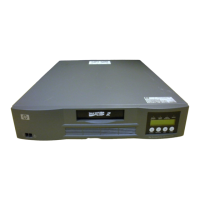• Host Common Section—updated by the host’s software application every time it uses the media.
For example: software application vendor’s name and version, media text label, date last written
• Media Vendor Unique Section—optional information written by the media vendor for their own
purposes. Unique to the media vendor.
• Media Vendor Unique Section—optional information written by the media vendor for their own
purposes. Unique to the media vendor.
• Host Vendor Unique Section—space reserved for use by software applications for their own pur-
poses. Unique to the software vendor. Approximately 1 kilobyte.
For details of use of LTO-CM in library applications, see “Using Cartridge Memory
(LTO-CM)” on page 77.
LTO Cartridge Memory issues
The LTO Cartridge Memory stores identification and usage information such as the number of times
the cartridge has been loaded, when it was last cleaned, and error logs. In the unlikely event of the
Cartridge Memory becoming damaged, you may experience difficulty with the cartridge.
Use the following table to resolve LTO Cartridge Memory problems:
SolutionCauseProblem
Replace the data cartridge.
LTO Cartridge Memory has failed
or is damaged.
A new data cartridge that is write-en-
abled is rejected by the drive.
Replace the data cartridge.
LTO Cartridge Memory has failed
and the drive has found no data to
recover.
A new data cartridge that is write-
protected is rejected in several known
good drives.
The data can still be recovered.
Contact the tape library suppli-
er for more information. After
data recovery, replace the
cartridge.
LTO Cartridge Memory has failed
or is damaged.
A cartridge that has data written to it
and is write-enabled is rejected by the
drive.
The data can still be recovered
but may take longer than nor-
mal.
LTO Cartridge Memory has failed
and the drive cannot use the tape
directory information to recover the
data.
A cartridge that has data written to it
and is write-protected restores very
slowly.
More information
• The latest version of the specification is incorporated into SCSI SPC-3.
• The access specification can be found at http://www.t10.org/.
Cartridges46
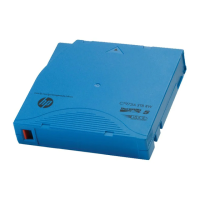
